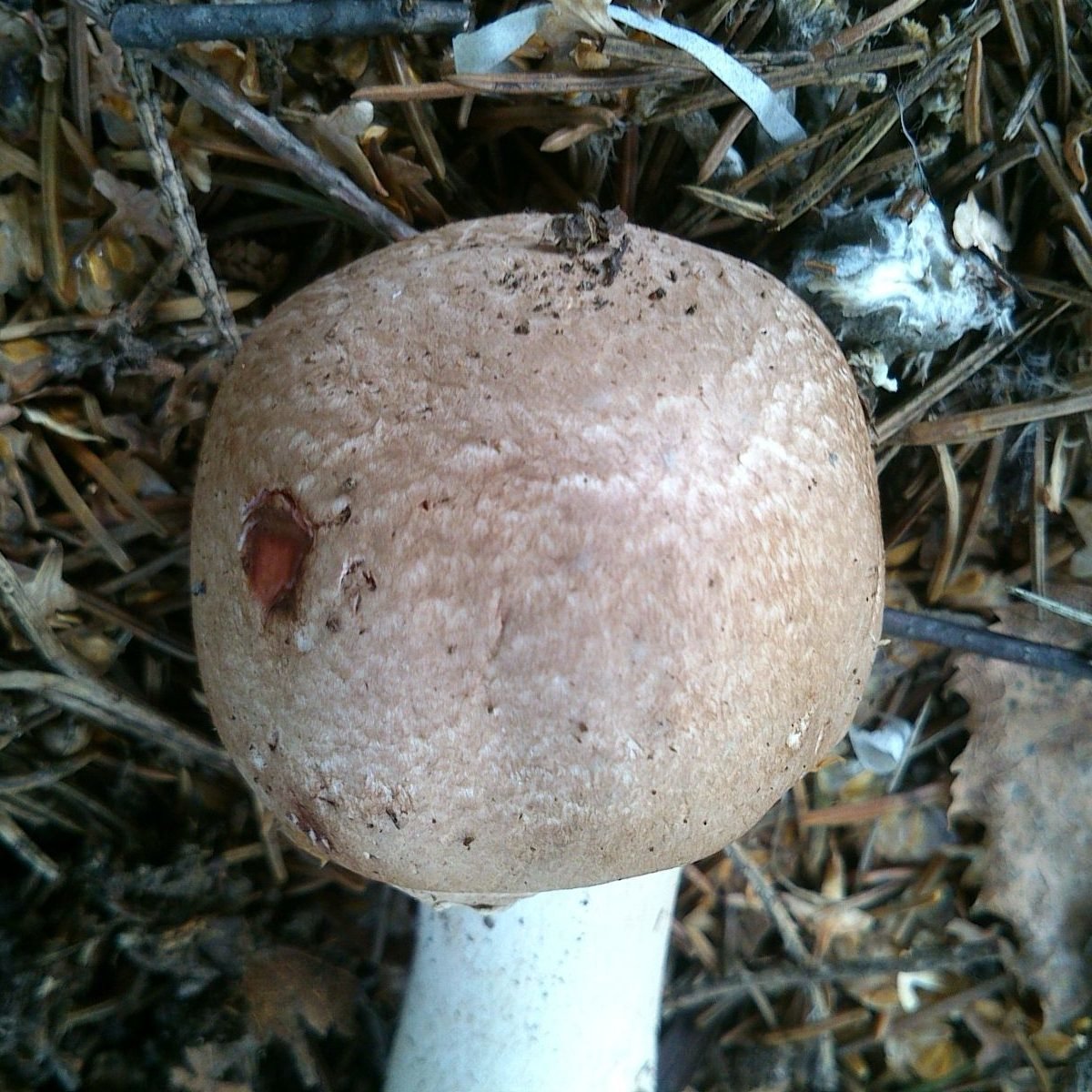Forest mushroom (Agaricus sylvaticus)
- Diviziune: Basidiomycota (Basidiomycetes)
- Subdiviziunea: Agaricomycotina (Agaricomycetes)
- Clasa: Agaricomycetes (Agaricomycetes)
- Subclasa: Agaricomycetidae (Agaricomycetes)
- Comanda: Agaricales (Agaric sau Lamelar)
- Familia: Agaricaceae (Champignon)
- Gen: Agaricus (champignon)
- Tip: Agaricus silvaticus
- Agaricus silvaticus
- Torn agaric
- Agaricus haemorrhoidarius
- Bloody agaricus
- Agaricus vinosobruneus
- Psalliota sylvatica
- Psalliota silvatica

istorie taxonomică
The famous German mycologist Jacob Christian Schaeffer (Jacob Christian Schaeffer) described this fungus in 1762 and gave it the currently accepted scientific name Agaricus sylvaticus.
Alternate spelling “Agaricus sylvaticus» — «Agaricus silvaticus” is equally common; this “spelling” is preferred by some authorities, including Geoffrey Kibby (Editor-in-Chief of the British scientific journal Field Mycology), and this spelling is used on Index Fungorum. Most online resources, including the British Mycological Society, use the form’silvaticus».
cap: diameter from 7 to 12 centimeters, rarely up to 15 cm. At first domed, then widens until it becomes almost flat. In adult mushrooms, the edge of the cap may be slightly sinuous, sometimes there are small pieces of a private coverlet. The surface of the cap is light reddish-brown, more buffy in the center and lighter towards the edges, covered with reddish-brown concentrically arranged fibrous scales, small and tightly pressed in the center, larger and slightly lagging behind – to the edges, where the skin is visible between the scales. Cracks appear in dry weather.
Flesh in a hat thin, dense, on the cut and when pressed, it quickly turns red, after a while the redness disappears, a brown tint remains.
plăci: frequent, with plates, free. In young specimens (until the veil is torn) creamy, very light, almost white. With age, they very quickly become cream, pink, deep pink, then dark pink, red, red-brown, until very dark.

Picior: central, 1 to 1,2-1,5 cm in diameter and 8-10 cm high. Smooth or slightly curved, with a slight thickening at the base. Light, lighter than the cap, off-white or whitish-brown. Above the annulus it is smooth, below the annulus it is covered with small brownish scales, small in the upper part, larger, more pronounced in the lower part. Solid, in very adult mushrooms it can be hollow.

Pulpă în picior dense, fibrous, with damage, even minor, turns red, after a while the redness disappears.
Inel: solitary, thin, hanging, unstable. The lower side of the ring is light, almost white, the upper side, especially in adult specimens, acquires a reddish-brown color from spilled spores.
Miros: weak, pleasant, mushroom.
Gust: moale.
pulbere de spori: dark brown, chocolate brown.
dispute: 4,5-6,5 x 3,2-4,2 microns, ovoid or ellipsoid, brown.
Reacții chimice: KOH – negative on the surface of the cap.
In the -speaking sector, it is traditionally believed that wild champignon (presumably) forms mycorrhiza with spruce, therefore, in many sources, pure spruce or coniferous forests with spruce and pine forests are indicated in many sources, sometimes mixed, but almost always with spruce.
Foreign sources indicate a much wider range: Blagushka grows in a variety of forests. It can be spruce, pine, birch, oak, beech in various combinations.
Therefore, let’s say this: it prefers coniferous and mixed forests, but is also found in deciduous.
It can grow on the edges of forests, in large parks and recreation areas. Often found near anthills.
From the second half of summer, actively – from August to mid-autumn, in warm weather until the end of November. Singly or in groups, sometimes forms “witch circles”.
The fungus is widely distributed throughout Europe, including England and Ireland, in Asia.
A good edible mushroom, especially when young. In strongly mature mushrooms, the plates break and fall off, which can give the dish a somewhat sloppy look. Recommended for cooking first and second courses, suitable for marinating. When fried, it is good as an addition to meat dishes.
Taste can be discussed separately. Forest champignon does not have any bright super-mushroom taste, the Western European culinary tradition considers this a virtue, since the pulp of such a mushroom can be added to any dish without fear that the taste will be interrupted. In the Eastern European tradition (Belarus, Our Country, our country), the absence of a mushroom taste is considered more a disadvantage than an advantage. But, as they say, it is not for nothing that mankind invented spices!
The author of this note fried a blashushka with onions in vegetable oil with the addition of butter at the end of frying, a little salt and no spices, it turned out quite tasty.
The question of whether pre-boiling is necessary remains open.
August champignon (Agaricus augustus), whose flesh turns yellow when touched, not reddens.
Video about forest mushroom Mushroom
The article uses photos of Andrey.
The references provided by Francisco in this issue are used as materials for translation.









